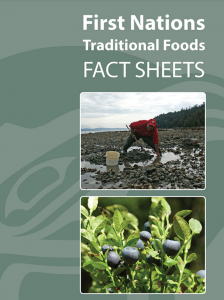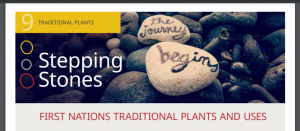This is a great resource for any teacher in BC looking for land based connections. This could easily be connected to Outdoor Ed/PE if the students are going on walks to find the food items (maybe not moose, but hopefully some of the plants?), or connected to science/PHE/Nutrition when looking at the nutritional facts of each item. While this is a general list for all of BC, I’m sure you could connect them with any specific region of BC. This would be a very safe resource for a teacher just trying to start out as it has tons of great, easy to use information.
BC Traditional Food Fact sheet
I connected this to the Okanagan College Indigenous Garden, which would also be a great learning opportunity for leaners in the Okanagan.

